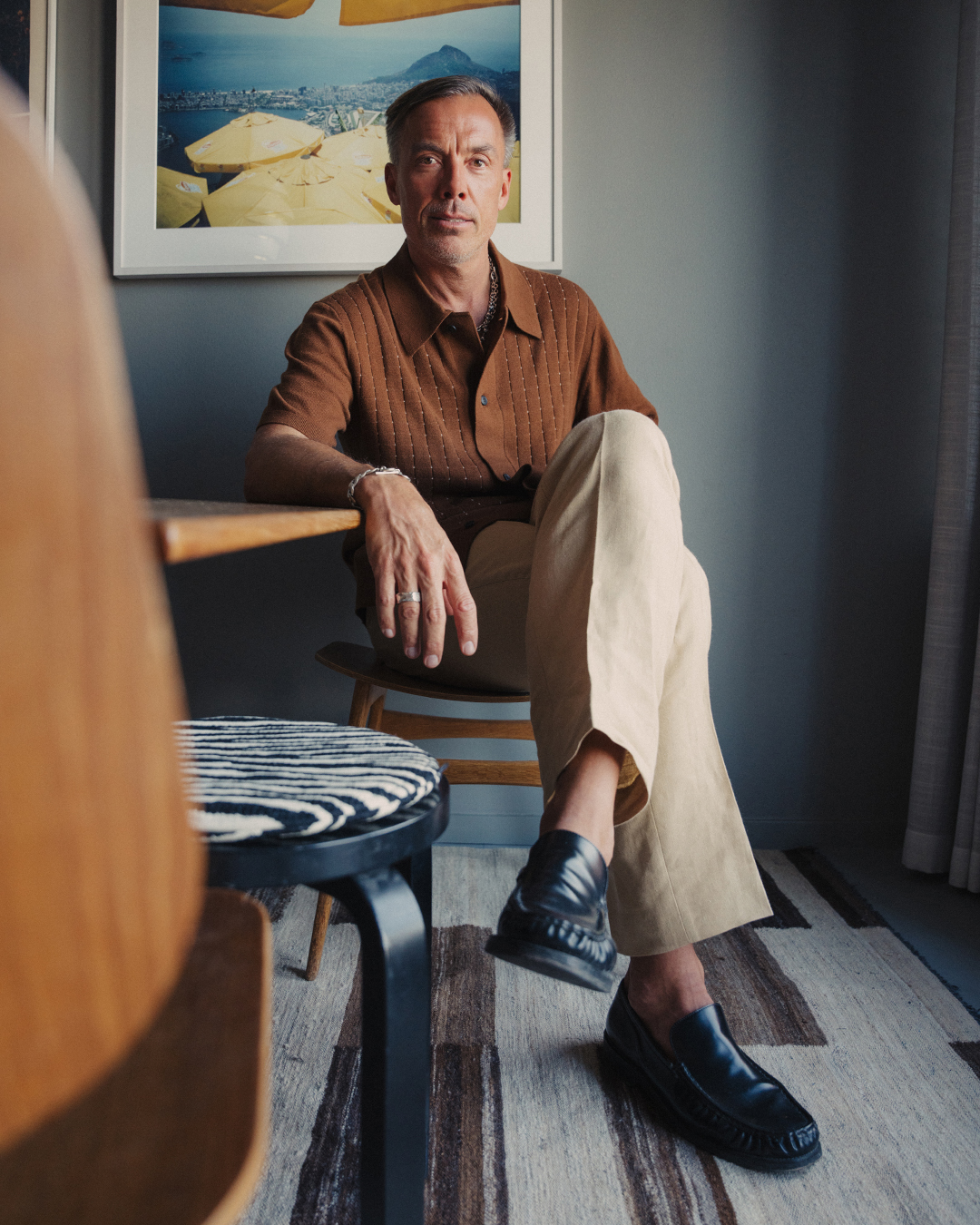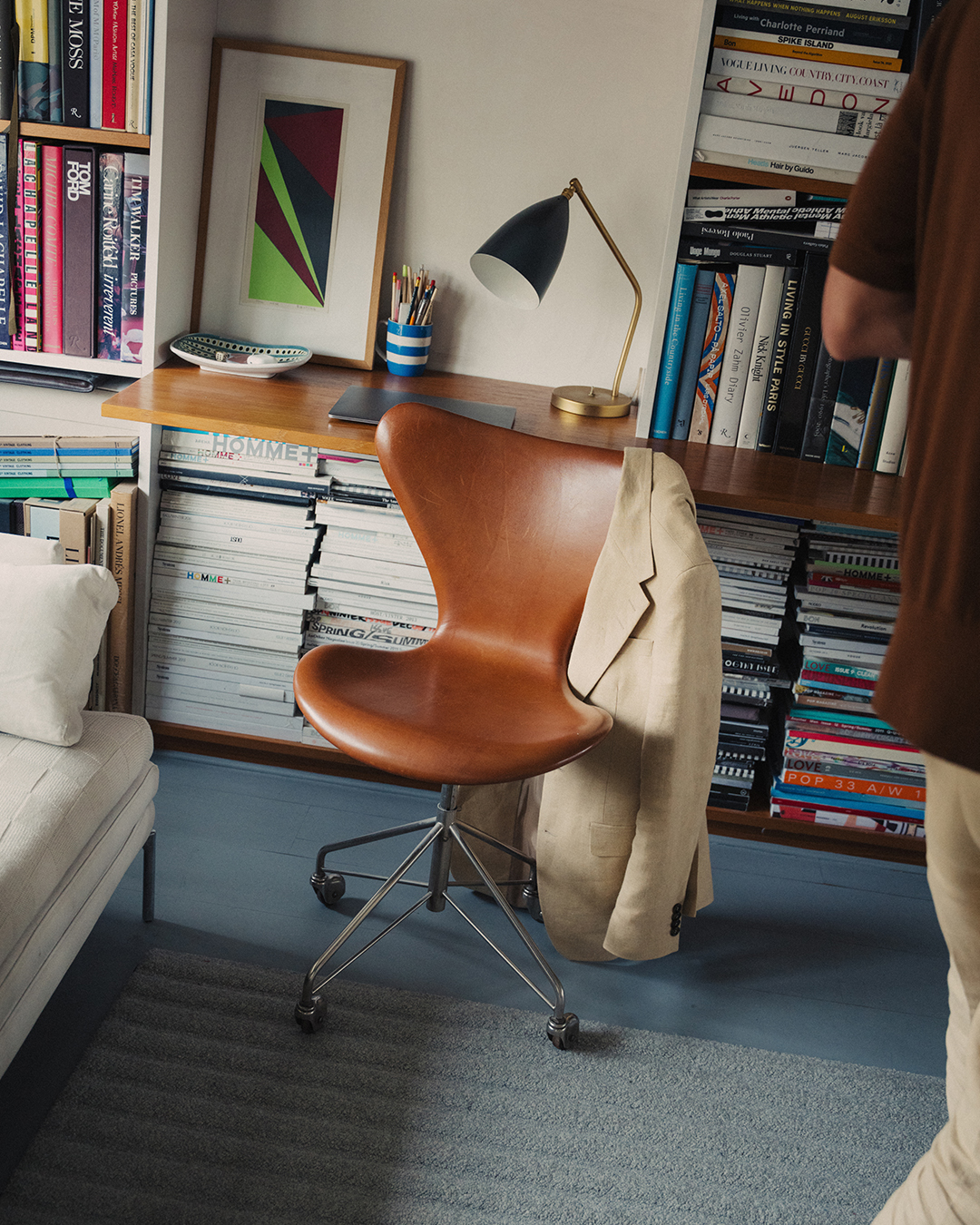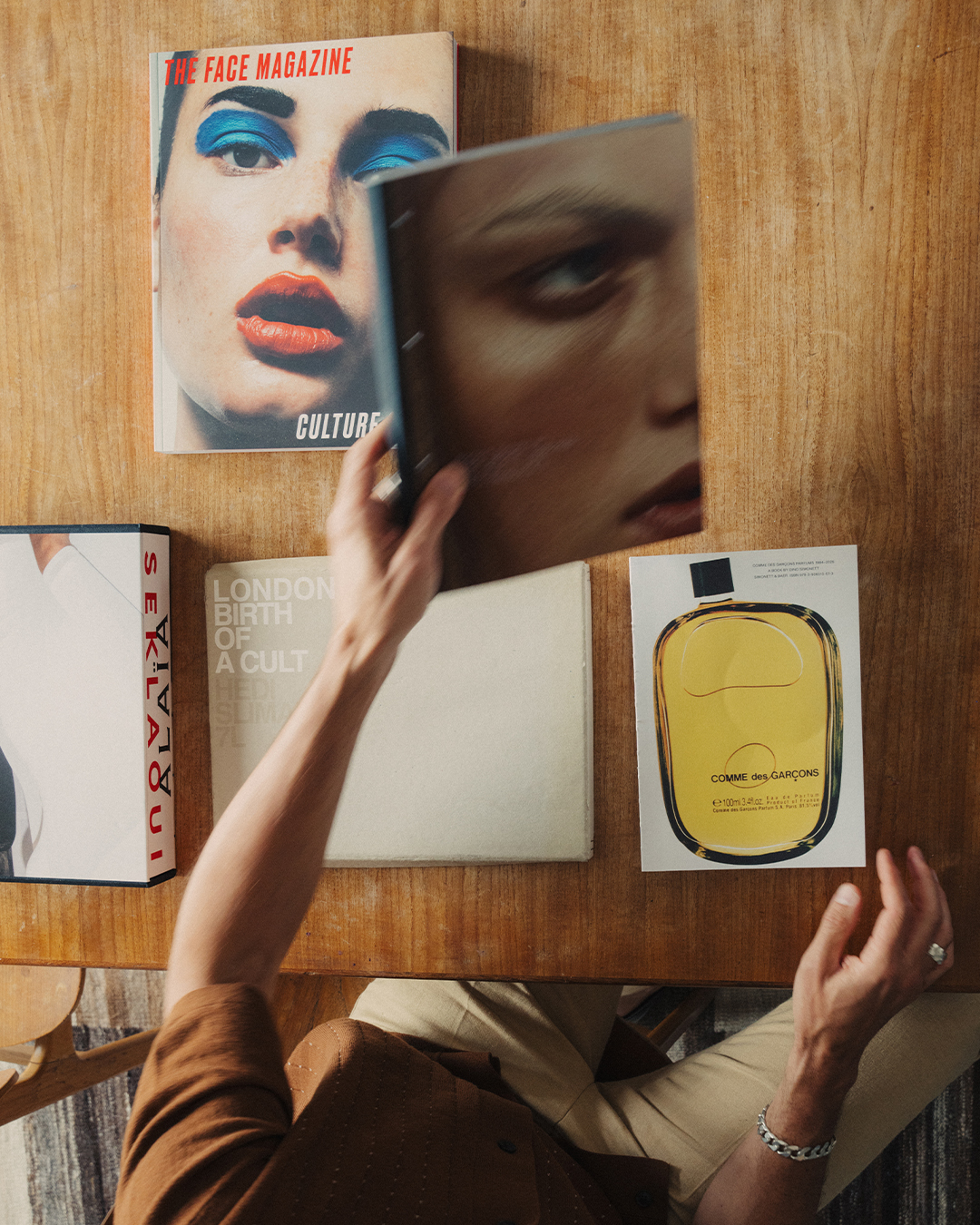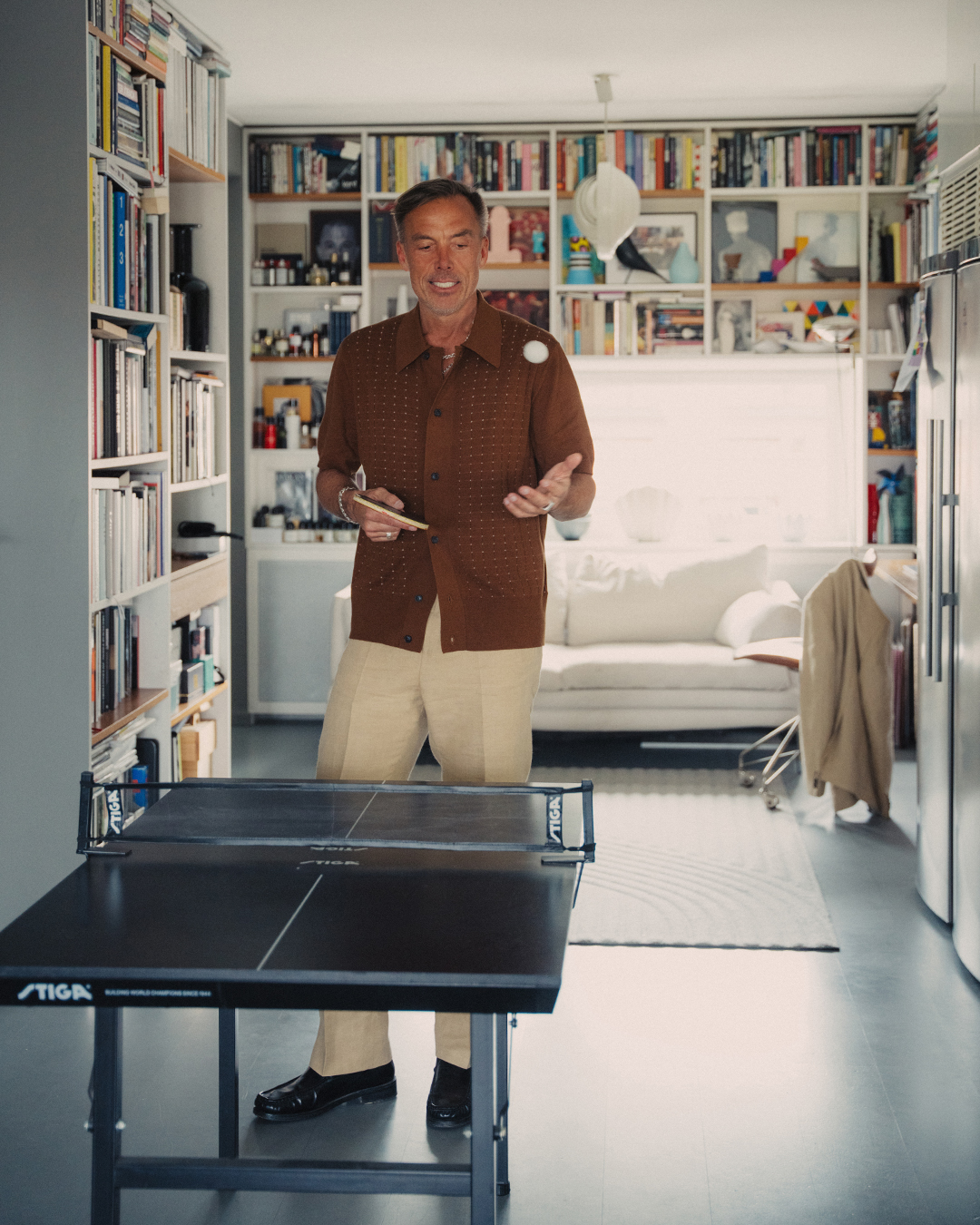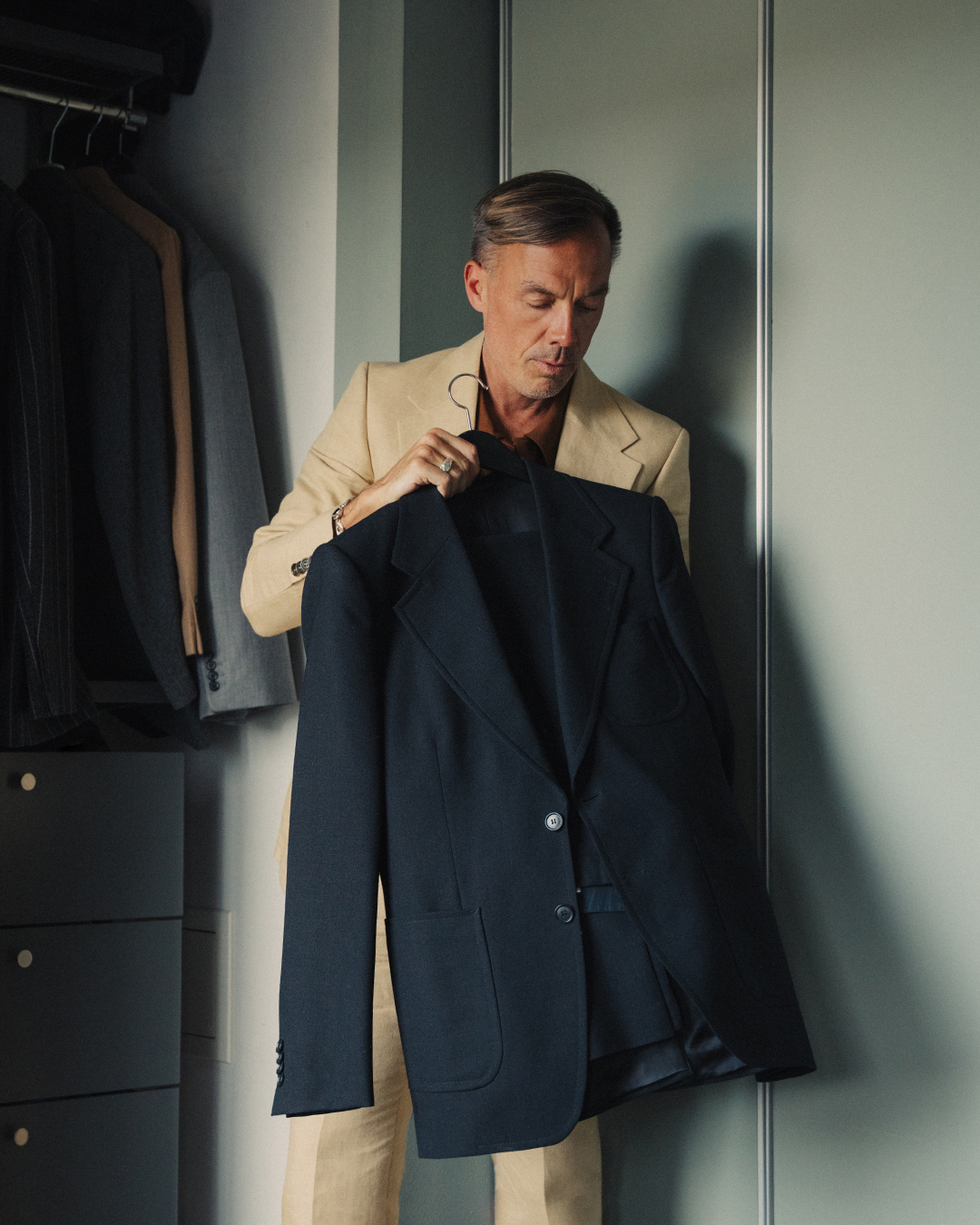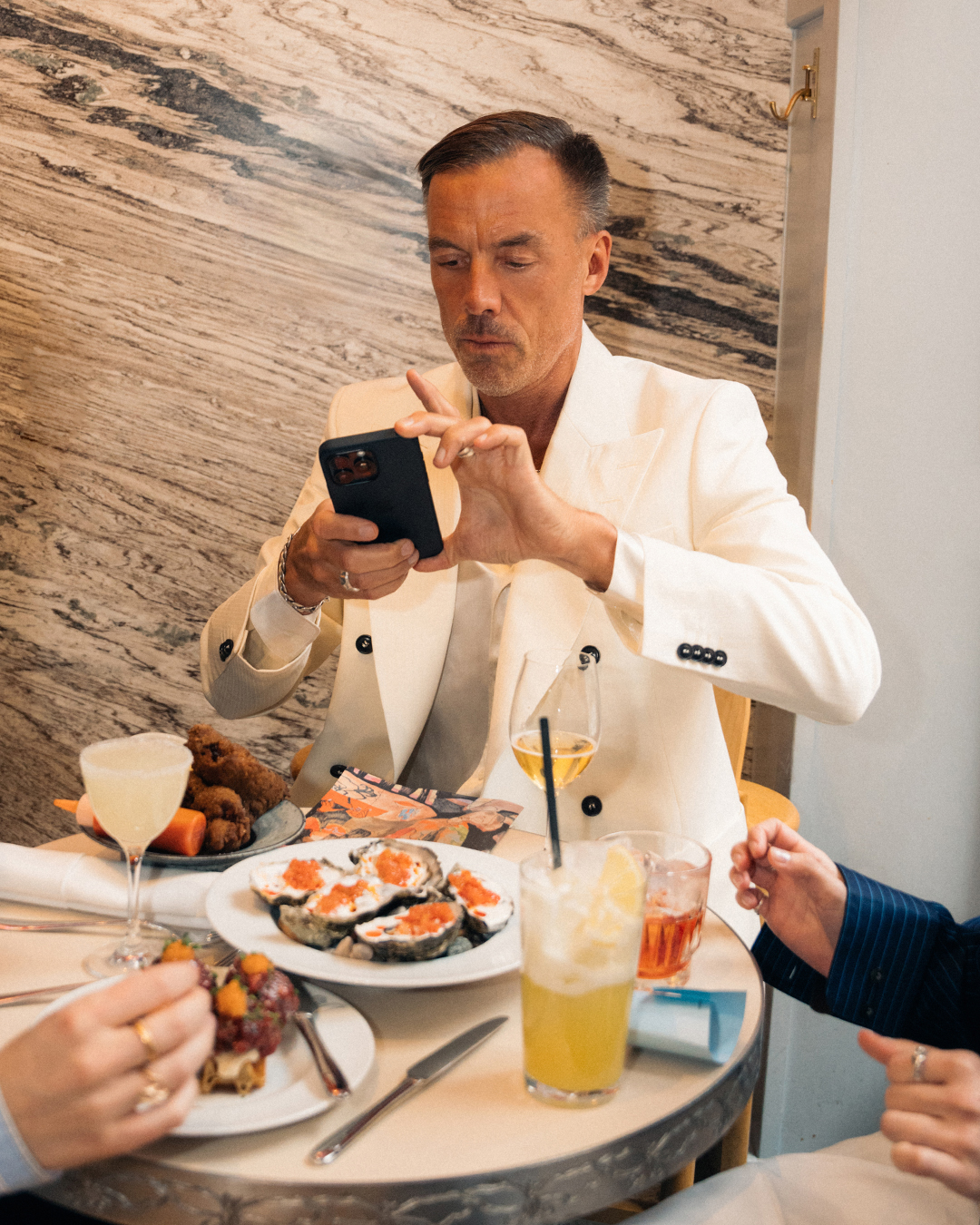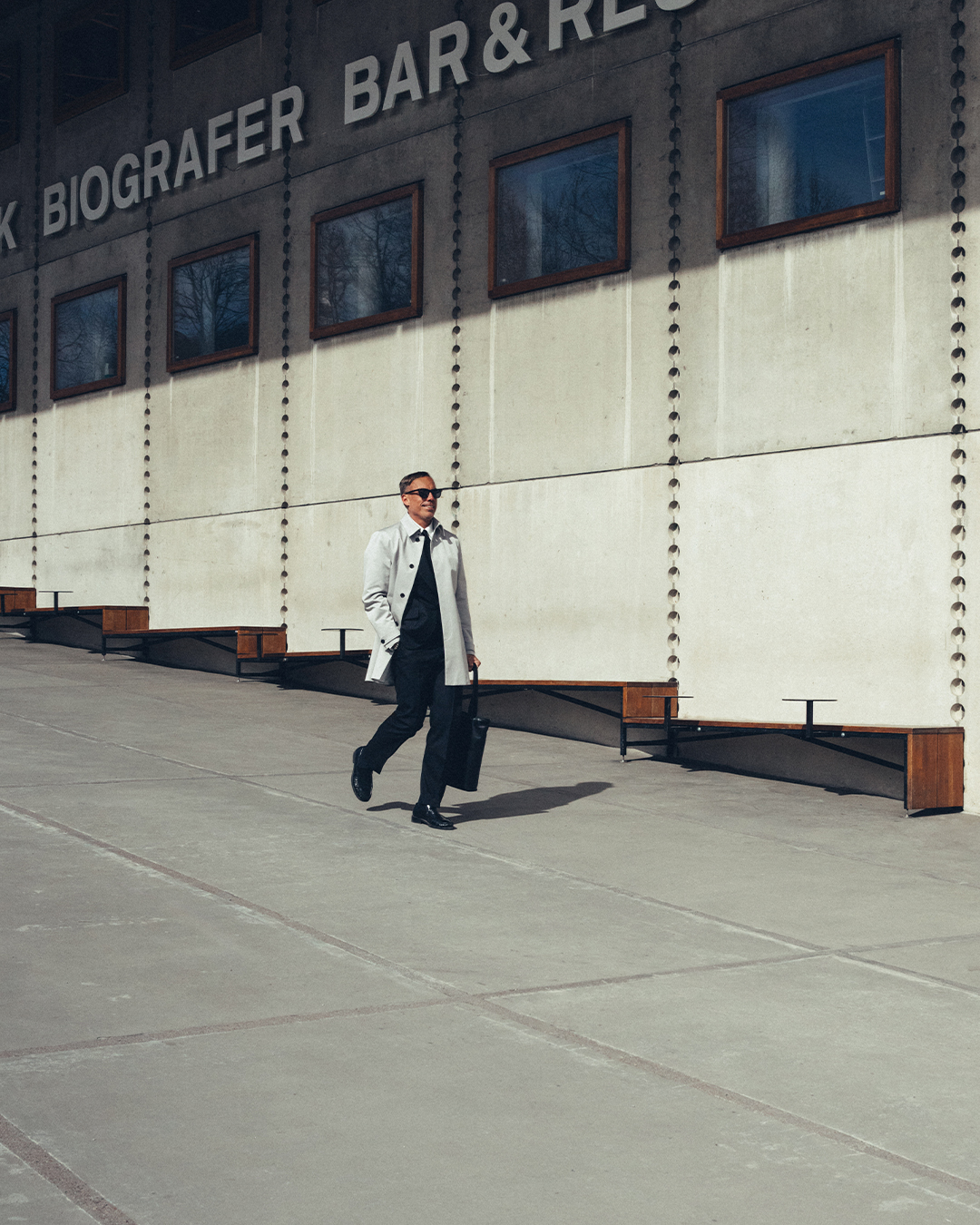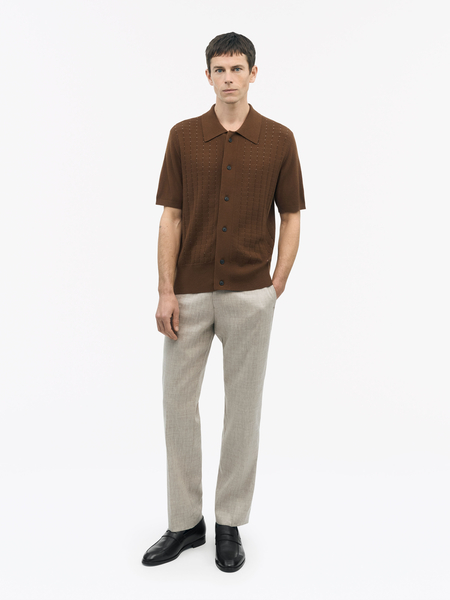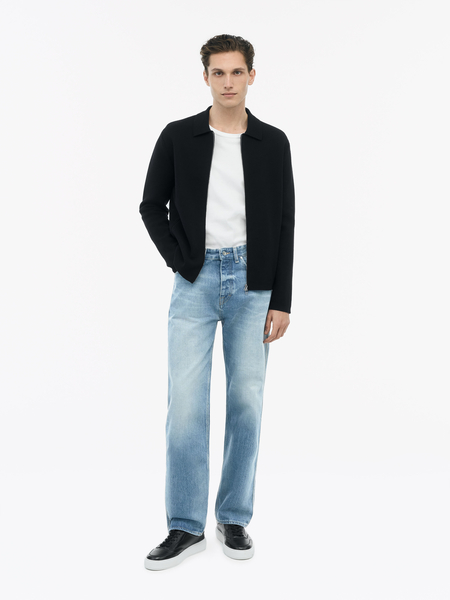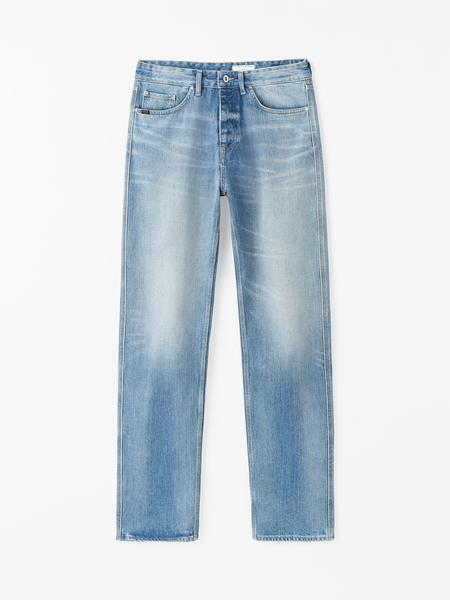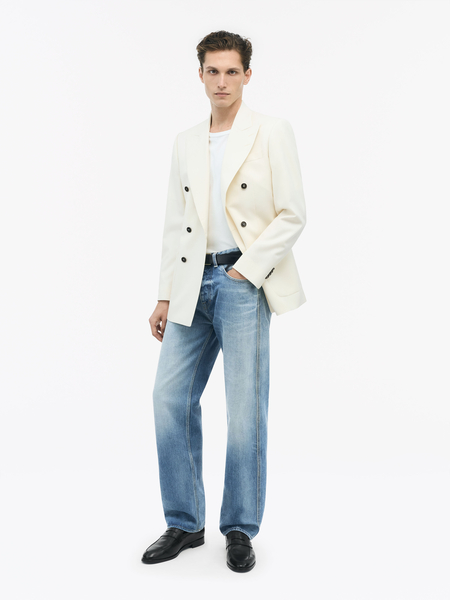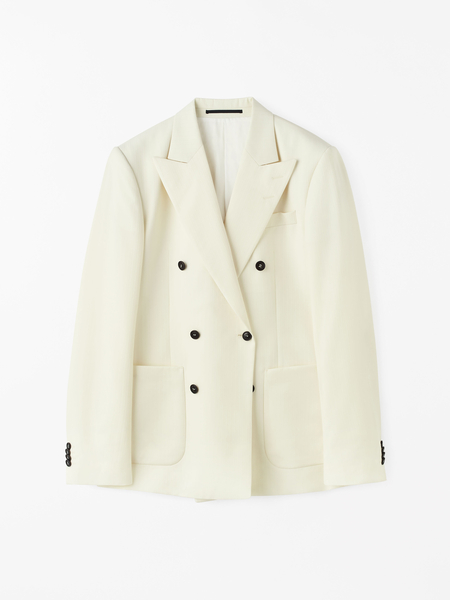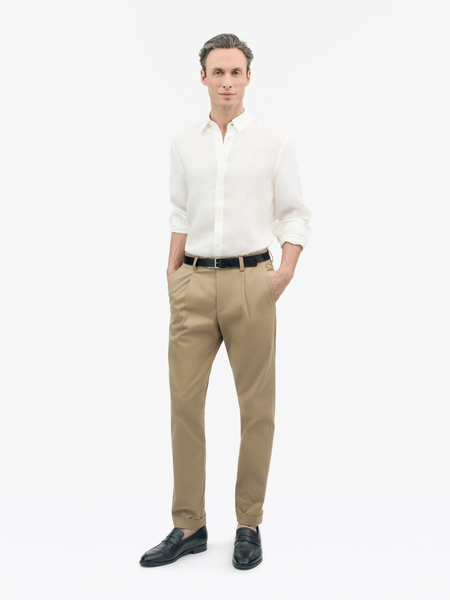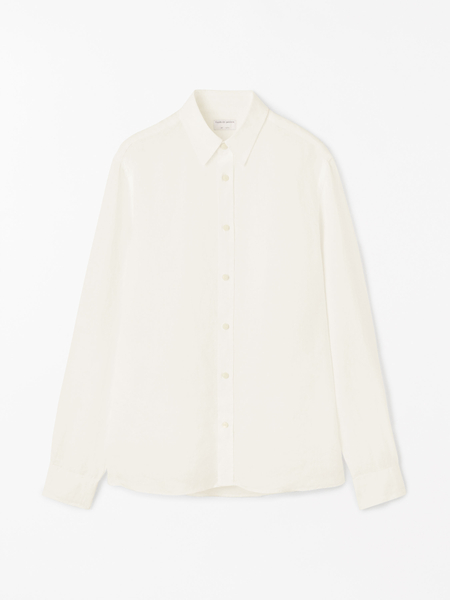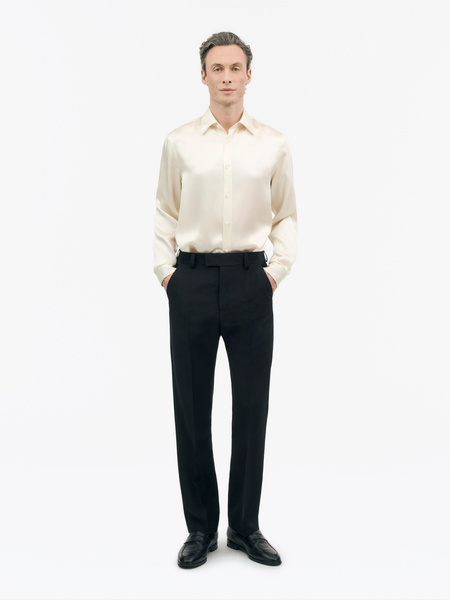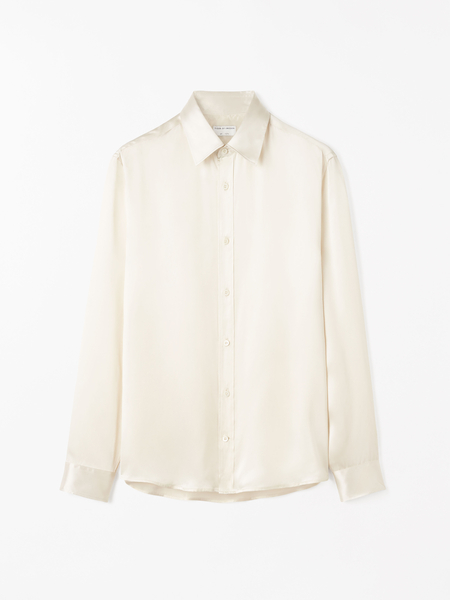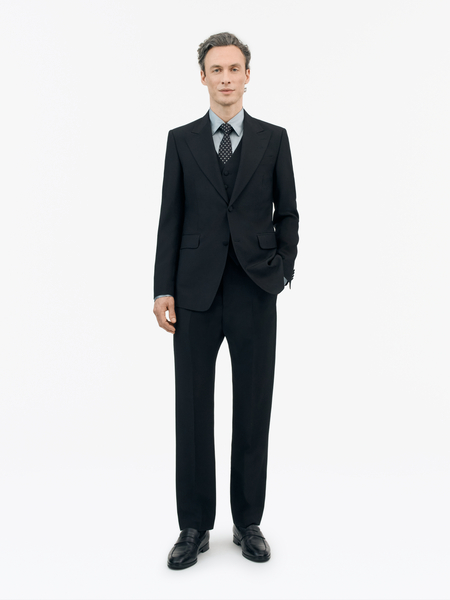
In this edition of Into the Fold, we visit the Stockholm home of Swedish journalist and fashion insider Daniel Lindström. Set in an intimate space that reflects his personal style, we talk about fashion, lifestyle, and Lindström’s passions for running, wellbeing, and interior design. With a relationship to Tiger of Sweden spanning more than two decades, Lindström shares reflections on the brand’s evolution alongside his own journey, grounded in a love for craftsmanship, timeless design, and the subtle power of fit—both in fashion and in life.
Your relationship with Tiger of Sweden spans decades. How did it all begin, and do you have any specific memories that stand out?
My relationship with Tiger of Sweden began in 1999 when I became fashion editor at Café Magazine—so it’s been over 25 years now. One of the first brands I connected with was Tiger, back when their office was on Vasagatan.
There’s a deep archive of memories. Since then, I’ve followed the brand through different phases, designers, and creative shifts. There’s always been a strong sense of mutual trust—Tiger of Sweden has consistently kept me in the loop, which naturally deepened my connection. While I wouldn’t say I was part of the family, it often felt that way. Looking back now, it’s fascinating to have seen Tiger’s evolution—from the big denim during the early 00’s to the shifts in tailoring, the shows in London and Stockholm, and all the celebrity collaborations throughout the years.
What stands out most are the shows, especially during the height of Stockholm Fashion Week about 10–15 years ago. Tiger of Sweden always went big—whether in London or in a packed tent at Kungsträdgården, with Håkan Hellström blasting and Robert Rydberg on styling. It was a full-on fashion moment and a testament to their ambition. Those memories, that energy—those are the moments I remember vividly.
And when we talk about craftsmanship and quality over the years—what kind of role do you think that’s played for Tiger of Sweden?
A huge one. Especially here in Scandinavia, where there aren’t that many ready-to-wear brands operating at a really high level. They’ve always represented something classic—there’s a real sense of heritage and tradition. But at the same time, they’ve also pushed boundaries and stayed progressive. There have been periods where they really experimented. That balance between honoring tradition and moving things forward—Tiger of Sweden has done that really well over the years.
On a more personal level, how do craftsmanship and heritage influence or inspire you beyond your professional work?
There’s a difference between what I appreciate as a journalist and what I value for myself. Professionally, I’m drawn to storytelling, to brands with heritage and a clear point of view. But personally, it all comes down to fit.
Fit is everything to me. I can usually tell immediately if something will work or not. That feeling—when a piece just sits right on your body—is hard to beat. In the end, clothing isn’t just about function—it’s also about connection. It’s about how you present yourself to the world, and how you feel in your own skin.
You have a strong interest in design and interiors, and craftsmanship and fashion often go hand in hand. Do you find that the way you think or feel about fashion shows up in how you approach design at home?
It’s actually very similar—that same sense of clarity. This dining table is from 1962, and the rest of the furniture is predominantly from the ’50s.
That says something about strong design: how timeless and long-lasting it can be. I think that’s even more fascinating with furniture than fashion. Clothing trends move faster, but a well-designed chair or table can stay relevant for generations.
It comes back to functionality: you want clothes you feel comfortable in, that you can move in, and it’s the same with furniture—you want pieces that feel good to be around. But also, there’s a layer of self-expression involved, which is important to me.
If you were to compare a suit, as a garment, to a piece of furniture—what kind of furniture would it be?
Good question. For me, a suit is important. It gives you presence, it radiates a kind of authority. It says something about the person wearing it.
If I wear a suit, I become a different person than if I’m in jeans and a sweatshirt. I stand up straighter. I become someone. To me, the suit is the key piece in men’s fashion—it’s the central item everything else revolves around. It’s the anchor.
Then you can style it however you like—with a T-shirt underneath, different pants, with or without a tie. You can do so much with it. So, for me, it’s probably like a leather armchair—a statement piece. It’s not a pouf or a basic couch—it’s the piece. Something that works in an office or at home. And it lasts a long time—very versatile, very enduring.
From a professional perspective—how do you stay inspired with so much constantly happening?
That’s never really been a problem for me. I’m naturally super curious—that’s probably my biggest strength in this job. I haven’t gotten tired of it. When I visit a new city, I’m out every minute—exhibitions, shops, just seeing what’s out there. You won’t find me sitting in a hotel room. And honestly, what inspires me most is just seeing the world. Nothing beats travel!
In what ways do art, music, food, or travel influence your perspective on fashion?
They’re all connected. It didn’t used to be like that. Back in the day, if you listened to indie pop, you dressed a certain way. Now everything overlaps. Fashion, food, music, travel—it all blends. Going to a restaurant can be just as inspiring to me as a museum visit or even a football match.
Would you say there are specific places, or cultural hotspots, that inspire your style? Like, restaurants, cafés, museums, or certain locations?
Absolutely. There are spots in Stockholm, and also cities like Copenhagen. Locally, Södermalm is one of those areas. I’ve developed this eye where I’m always scanning how things look, and I think that’s crucial. For example, Way Out West is a great spot for me. When I’m there, I pay attention to how people are dressed—it teaches me something. It’s all about stepping out of your bubble. You can’t just focus on the cool events; you also need to notice the “unpolished” stuff. Way Out West has given me a lot in that sense.
What’s the most authentic part of Stockholm you’d recommend to someone visiting—something that really captures the city for you?
For me, Djurgården is really important. It’s like a green oasis. In cities today, with all the density and fast pace, having a park or green space where the air feels fresher—that’s more valuable than people realise. So, if it’s your first time in Stockholm, I’d say: go to Djurgården. And if you’re looking for more energy, head to Södermalm. You can find a great restaurant on pretty much every block there. Café Nizza—that’s definitely a favorite and of course Riche Fenix is a modern Stockholm institution.

And since you mentioned Djurgården—it’s also where you run. What does running mean to you, and how does it impact your wellbeing?
It’s really important to me—mainly for mental health. It’s about well-being, staying sharp. So, it’s mental, physical, and the social part is huge because I almost never run alone. I run with different groups and circles. I run with Tommy Myllymäki a couple of times a week, and there’s a group of us—some women, some men. It’s a crew. We never cancel because of the weather—only if someone’s injured or really can’t make it. Rain’s no excuse.
Even during fashion week, running has become a great way to network socially, especially in an industry that’s often party heavy. It has become such a great alternative to the typical late-night socialising. It gives you the same kind of connection and community, but in a much healthier way. In Florence, for example, there’s this crew that meets up for runs, and then you’ll see the same people in Milan the next week, and again in Paris after that. It’s so much fun. And professionally, it’s amazing—you end up meeting photographers, stylists, buyers, media people, designers… it’s a really organic way to build those relationships.
Looking ahead, how do you see your relationship with fashion and lifestyle continuing to evolve?
Even though I’ve worked with this for over 25 years, I find it more and more enjoyable. There is a constant transformation happening in the industry. This fall, for example, we’ll see many designers debuting at new fashion houses. These are the kinds of things I think about. As long as I still feel passionate about this, and I maintain the same level of curiosity for everything new and creative, I believe it will be a lifelong relationship.
A huge thanks to Daniel Lindström for taking part in our new interview series Into the Fold. You can follow his fashion journey on Instagram @daniellindstrom.
